Donate now to support the LLIFLE projects.
Your support is critical to our success.
Your support is critical to our success.
Cephalomamillaria greggii var. greggii
Život v Přír. 29?: 9. [Kakt. a Succ. 29.]. 1925
Family: CACTACEAE
Život v Přír. 29?: 9. [Kakt. a Succ. 29.]. 1925
Family: CACTACEAE
Accepted Scientific Name: Epithelantha micromeris subs. greggii (Engelm.) N.P.Taylor
Cactaceae Consensus Init. 5: 12. 1998
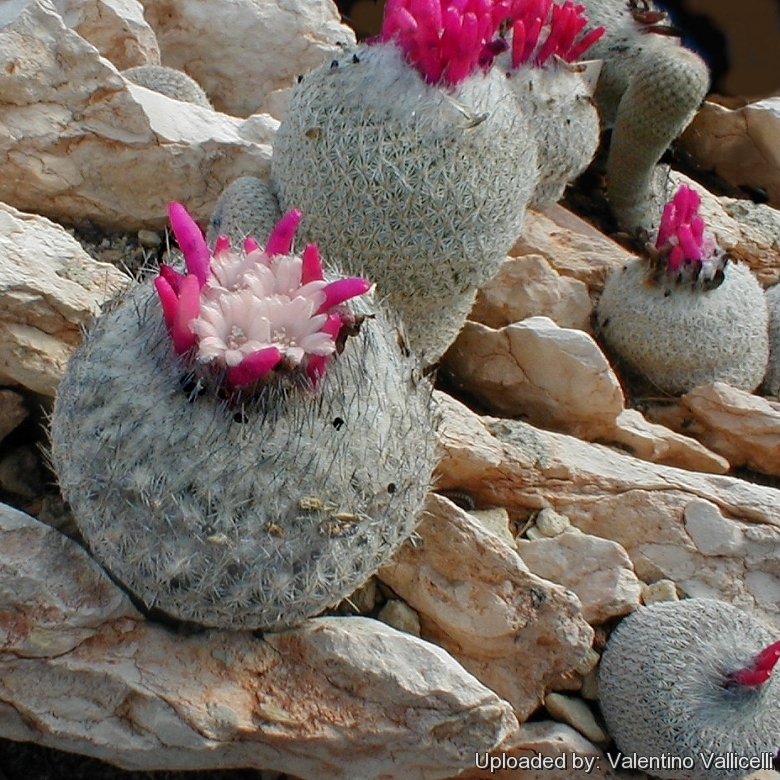
Cephalomamillaria greggii var. greggii (Epithelantha micromeris subs. greggii) Photo by: Valentino Vallicelli
SB321 (Collector: Steven Brack) Cuesta la Muralla, Coahuila, Mexico (A form with black tipped spines)
SB321 (Collector: Steven Brack) Cuesta la Muralla, Coahuila, Mexico (A form with black tipped spines)
Synonyms:
- Epithelantha micromeris subs. greggii (Engelm.) N.P.Taylor
- Cactus micromeris var. greggii (Engelm.) J.M.Coult.
- Cephalomamillaria greggii var. greggii (Engelm.) Frič
- Cephalomamillaria micromeris var. greggii cv. Gray Herb. CardCat., Issue 114 (Engelm.) Frič
- Epithelantha greggii (Engelm.) Orcutt
- Epithelantha micromeris var. greggii (Engelm.) Y.Itô
- Mammillaria greggii (Engelm.) Saff.
- Mammillaria micromeris var. greggii Engelm.
See all synonyms of Epithelantha micromeris
back
Accepted name in llifle Database:Epithelantha micromeris (Engelm.) F.A.C.Weber in Bois
Dict. Hort. [Bois] 2: 804. 1898 Britton & Rose, Cactaceae, 3: 93, fig. 102. 1922
Synonymy: 16
- Epithelantha micromeris (Engelm.) F.A.C.Weber in Bois
- Cactus micromeris (Engelm.) Kuntze
- Cephalomamillaria micromeris (Engelm.) Frič
- Echinocactus micromeris (Engelm.) F.A.C.Weber in Bois
- Mammillaria micromeris Engelm.
- Epithelantha micromeris var. caespitosa Y.Itô
- Epithelantha micromeris f. cristata hort.
- Epithelantha micromeris var. longispina Y.Itô
- Epithelantha micromeris var. neomexicana n.n.
- Epithelantha micromeris var. rufispina (Bravo) Backeb.
- Epithelantha greggii var. rufispina (Bravo) Backeb.
- Epithelantha rufispina Bravo
- Epithelantha micromeris var. texensis n.n.
- Epithelantha micromeris var. texensis f. cristata hort.
- Epithelantha micromeris var. typica Croizat
Epithelantha micromeris var. dickisoniae hort.
Synonymy: 3 Accepted name in llifle Database:
Epithelantha micromeris subs. greggii (Engelm.) N.P.Taylor
Cactaceae Consensus Init. 5: 12. 1998
Synonymy: 12
- Epithelantha micromeris subs. greggii (Engelm.) N.P.Taylor
- Cactus micromeris var. greggii (Engelm.) J.M.Coult.
- Cephalomamillaria greggii var. greggii (Engelm.) Frič
- Cephalomamillaria micromeris var. greggii cv. Gray Herb. CardCat., Issue 114 (Engelm.) Frič
- Epithelantha greggii (Engelm.) Orcutt
- Epithelantha micromeris var. greggii (Engelm.) Y.Itô
- Mammillaria greggii (Engelm.) Saff.
- Mammillaria micromeris var. greggii Engelm.
- Epithelantha greggii subs. potosina D.Donati & Zanov.
- Epithelantha micromeris var. densispina (Bravo) Backeb.
- Epithelantha densispina Bravo
- Epithelantha greggii var. densispina (Bravo) Backeb.
Epithelantha micromeris subs. greggii f. cristata
Synonymy: 2 Accepted name in llifle Database:
Epithelantha micromeris subs. pachyrhiza (W.T.Marshall) N.P.Taylor
Cactaceae Consensus Init. 5: 13. 1998
Synonymy: 6
- Epithelantha micromeris subs. pachyrhiza (W.T.Marshall) N.P.Taylor
- Epithelantha micromeris var. pachyrhiza W.T.Marshall
- Epithelantha pachyrhiza (W.T.Marshall) Backeb.
- Epithelantha micromeris f. elongata (Backeb.) Bravo
- Epithelantha pachyrhiza subs. elongata (Backeb.) D.Donati & Zanov.
- Epithelantha pachyrhiza var. elongata Backeb.
Epithelantha micromeris subs. pachyrhiza f. cristata
Accepted name in llifle Database:
Epithelantha micromeris subs. polycephala (Backeb.) Glass
Guía Identif. Cact. Amenazadas México 1: Ep/mi ssp. polycephala (1998 publ. 1997)
Synonymy: 4
- Epithelantha micromeris subs. polycephala (Backeb.) Glass
- Epithelantha greggii subs. polycephala (Backeb.) D.Donati & Zanov.
- Epithelantha micromeris var. polycephala (Backeb.) Glass & R.A.Foster
- Epithelantha polycephala Backeb.
Epithelantha micromeris subs. unguispina (Boed.) N.P.Taylor
Cactaceae Consensus Init. . 5: 12. 1998
Synonymy: 6
- Epithelantha micromeris subs. unguispina (Boed.) N.P.Taylor
- Epithelantha micromeris var. unguispina (Boed.) Backeb.
- Epithelantha unguispina (Boed.) D.Donati & Zanov.
- Mammillaria micromeris var. unguispina Boed.
- Epithelantha spinosior
- Epithelantha unguispina subs. huastecana D.Donati & Zanov.
back
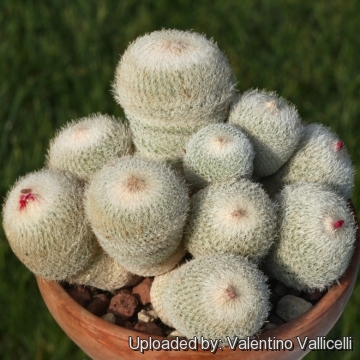
Cephalomamillaria greggii var. greggii (Epithelantha micromeris subs. greggii) Photo by: Valentino Vallicelli
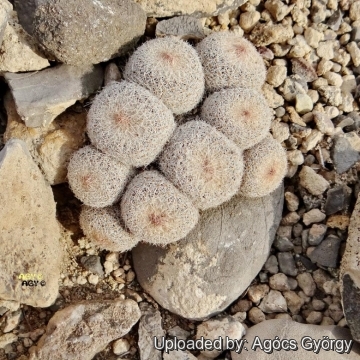
Clustering habit. Mexico. (Epithelantha micromeris subs. greggii) Photo by: Agócs György

SB1624 Collector: Steven Brack) Locality: Santa Theresa, Coahuila, Mexico (Epithelantha micromeris subs. greggii) Photo by: Cactus Art
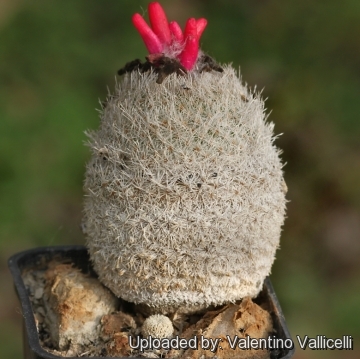
Cephalomamillaria greggii var. greggii (Epithelantha micromeris subs. greggii) Photo by: Valentino Vallicelli
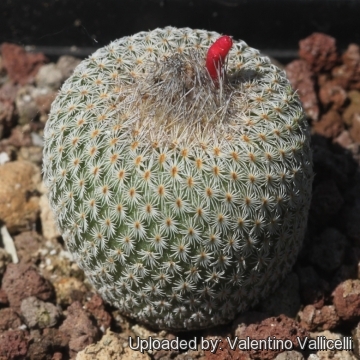
Cephalomamillaria greggii var. greggii (Epithelantha micromeris subs. greggii) Photo by: Valentino Vallicelli
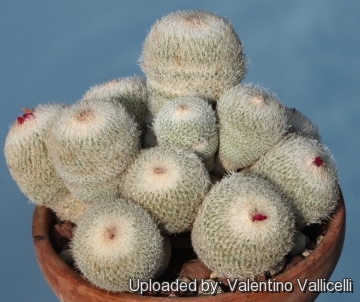
Cephalomamillaria greggii var. greggii (Epithelantha micromeris subs. greggii) Photo by: Valentino Vallicelli
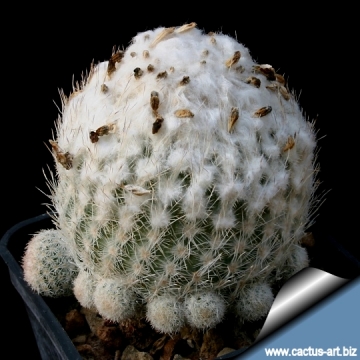
Cephalomamillaria greggii var. greggii (Epithelantha micromeris subs. greggii) Photo by: Cactus Art
Send a photo of this plant.
The gallery now contains thousands of pictures, however it is possible to do even more. We are, of course, seeking photos of species not yet shown in the gallery but not only that, we are also looking for better pictures than those already present. Read More...
The gallery now contains thousands of pictures, however it is possible to do even more. We are, of course, seeking photos of species not yet shown in the gallery but not only that, we are also looking for better pictures than those already present. Read More...
| Your Actions | |
|---|---|
| Back to Cephalomamillaria index | |
| Back to Cactaceae index | |
 |
Back to Cacti Encyclopedia index |








